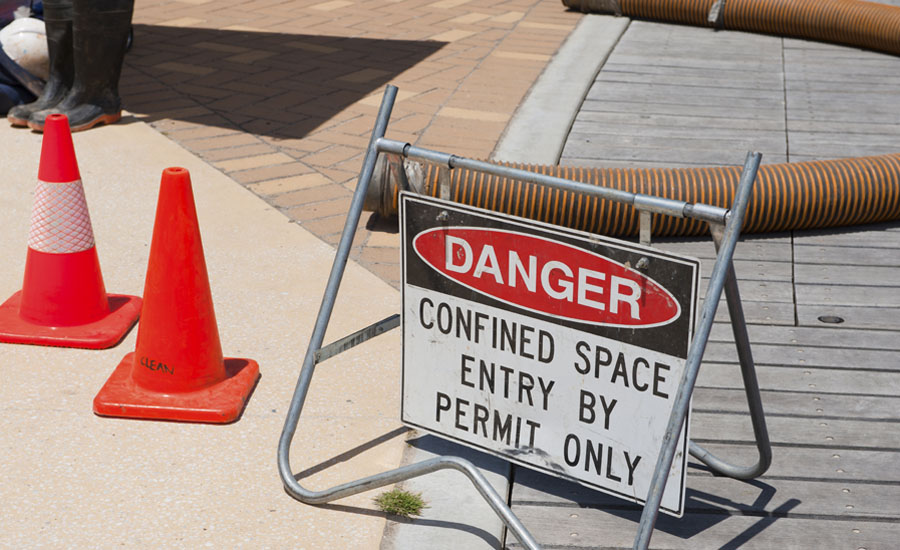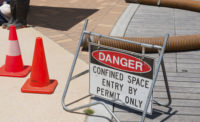History
On May 4, 2015, OSHA replaced a training-only requirement for confined space work in construction with a more comprehensive standard that includes a permit program and training requirements. The new standard became effective August 3, 2015. On January 6, 2016, OSHA announced that it would not issue citations under the standard to residential construction if the employer is making good faith efforts to comply with the training requirements of the standard.
Violation case study
On a sunny day in Key Largo, Florida, a utility worker removed a manhole cover and descended into a 15-foot-deep drainage hole that was just wide enough to accommodate him, unaware that years of rotting vegetation had filled the hole with a toxic brew of hydrogen sulfide and methane gas and had also left oxygen levels low. When a co-worker stopped hearing sounds from below, he realized that the man was in trouble and quickly followed him into the hole. So did a third worker. None of them wore respiratory protection. Neither did the firefighter who attempted to save the men after arriving on the scene, because an air tank would not have allowed him to fit into the hole. Other firefighters – wearing protective gear – were eventually able to pull the men out of the cramped space. The three utility workers died. The firefighter was hospitalized in critical condition, but survived. Three sheriff’s deputies who were exposed to the dangerous fumes were also taken to a local hospital for treatment.
Key compliance requirements
- Before work at a site begins, a competent person must identify all confined spaces and permit-required spaces.
- Employees must be informed about the permit spaces through signage or other means.
- The internal atmosphere must be tested.
- Workers must be provided personal protective equipment when engineering and work practice controls do not adequately control hazards.
- Workers must be trained about the hazards.
- Employers must ensure that properly trained rescue and emergency services are available before entry into permit-required confined spaces.
Why this standard is important
Construction workers often perform tasks in confined spaces, which are large enough for an employee to enter but have limited means of entry or exit and are not designed for continuous occupancy. People working in confined spaces face life-threatening physical and atmospheric hazards including toxic substances, electrocutions, explosions, and asphyxiation - hazards that can be avoided if they are recognized and addressed prior to entering these spaces to perform work.
Enforcement Statistics
Enforcement statistics are unavailable for this standard.
Compliance Assistance
- Protecting Construction Workers in Confined Spaces: Small Entity Compliance Guide (OSHA)
- Asphyxiation in Sewer Line Manhole (OSHA)
- Is 911 your Confined Space Rescue Plan? (OSHA Fact Sheet)
- Confined Spaces in Construction: Sewer Systems (OSHA Fact Sheet)



